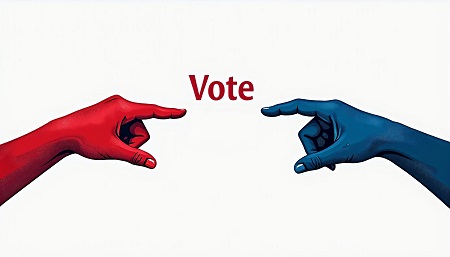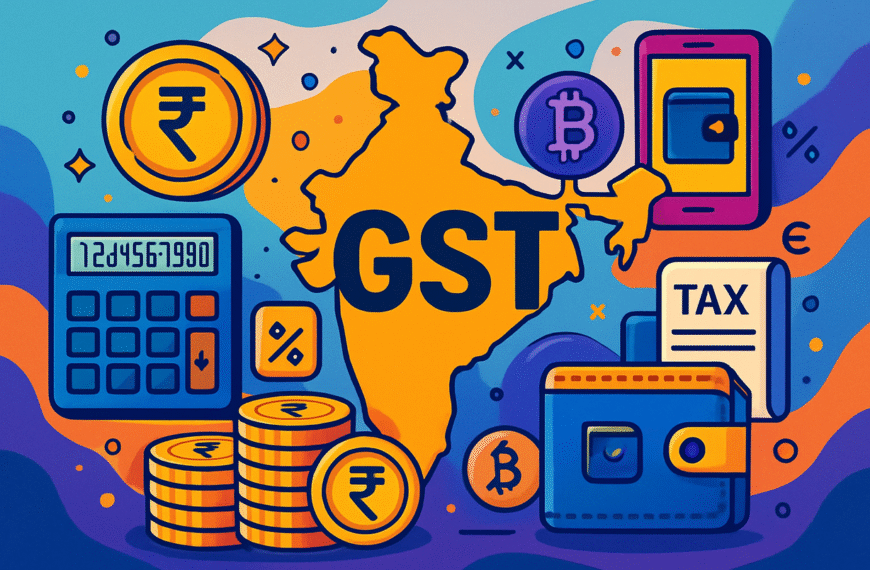📌 Introduction
Elections are one of the most fundamental mechanisms of a democracy. They allow citizens to choose their leaders, express their views, and participate in decision-making processes that affect their lives. But what exactly are elections? How do they function, and why are they so vital to the health of societies?
This guide will help you understand everything about elections—from basic definitions to global variations, types of electoral systems, challenges, digital innovations, and their role in democratic governance.
🧭 Definition of Election
An election is a formal decision-making process by which a population chooses individuals to hold public office. It typically involves casting votes for candidates or political parties and occurs at regular intervals.
The key elements include:
- Voters (Electorate): The citizens eligible to vote.
- Candidates: Individuals contesting to be elected.
- Ballots: Tools for recording choices (paper, electronic, etc.).
- Electoral Commission: The body that oversees the election.
🏛️ Purpose of Elections
Elections serve several crucial purposes in modern society:
- Legitimizing Authority: They provide a legal and moral basis for leaders to govern.
- Ensuring Accountability: Elected officials must perform well to be re-elected.
- Empowering Citizens: People have the power to shape laws and policies.
- Maintaining Peaceful Transitions: They allow governments to change without violence.
📊 Types of Elections
1. General Elections
Held to elect national leaders such as presidents, prime ministers, or legislators (e.g., Lok Sabha in India, U.S. Congress).
2. Local Elections
Decide who governs at the municipal or regional level (mayors, councillors).
3. Presidential Elections
Specific to countries with a presidential system (e.g., United States, Brazil).
4. Parliamentary Elections
Voters choose members of parliament, who then select a prime minister (e.g., UK, India).
5. By-elections
Special elections to fill vacant seats between general elections.
6. Referendums
Not technically elections, but similar in process—citizens vote directly on a specific issue (e.g., Brexit referendum).
source by: CAPITAL TV
🌍 Global Examples of Elections
🇮🇳 India
- Election Commission of India oversees the world’s largest democratic process.
- General elections held every 5 years.
- Uses Electronic Voting Machines (EVMs).
🇺🇸 United States
- Elections held every 2 and 4 years.
- Includes primaries, general elections, and electoral college system for president.
🇬🇧 United Kingdom
- Parliamentary system.
- The Prime Minister is not directly elected by the public.
🇧🇷 Brazil
- Uses electronic voting.
- Holds national and regional elections together.
🧮 Electoral Systems
1. First-Past-the-Post (FPTP)
- The candidate with the most votes wins.
- Common in India, UK, Canada, and the U.S.
2. Proportional Representation (PR)
- Seats are allocated based on the proportion of votes received.
- Used in Germany, South Africa, and Israel.
3. Ranked Choice Voting (RCV)
- Voters rank candidates in order of preference.
- Used in parts of the U.S. and Australia.
4. Mixed Electoral Systems
- Combine FPTP and PR (e.g., Japan, Mexico).
🏗️ Phases of an Election
1. Announcement
- Election dates declared by the electoral authority.
2. Nomination of Candidates
- Parties or independents file applications to contest.
3. Campaigning
- Parties promote their agenda through rallies, ads, and debates.
4. Voting
- Citizens cast their votes on election day or via postal/early voting.
5. Counting and Declaration
- Votes are counted, and results are declared.
6. Government Formation
- Majority party or coalition forms the government.
🛠️ Role of Election Commissions
An Election Commission is an independent body responsible for:
- Conducting free and fair elections
- Voter registration
- Setting election guidelines
- Monitoring campaign funding and spending
- Resolving disputes
Examples:
- Election Commission of India (ECI)
- Federal Election Commission (FEC – USA)
- Independent Electoral Commission (IEC – South Africa)
💻 Technology in Elections
✅ Advantages:
- Electronic Voting Machines (EVMs): Faster results, less tampering
- Online Voter Registration
- Blockchain Voting (Experimental): Immutable and secure
- Mobile Apps for Voter Awareness
❌ Challenges:
- Cybersecurity threats
- Lack of digital literacy
- Misinformation through social media
🤔 Why Voter Turnout Matters
High turnout = Stronger democracy.
Low turnout can signal:
- Apathy or disenchantment
- Fear or suppression
- Lack of education
Governments and civil society work to improve turnout through:
- Voter education drives
- Accessibility (wheelchair ramps, braille ballots)
- Simplified procedures
⚖️ Common Challenges in Elections
- Voter Fraud or Manipulation
- False IDs, ballot stuffing (rare in most democracies)
- Political Violence
- Especially in fragile democracies or authoritarian regimes
- Vote Buying & Misinformation
- Social media manipulation and fake news influence voters
- Gerrymandering
- Deliberate redrawing of districts to favor certain parties
- Election Boycotts
- When opposition refuses to participate (often in protest)
🌱 Role of Youth in Elections
Youth voting is crucial for long-term national progress. In many countries, 18 is the minimum voting age. Young voters are:
- More tech-savvy
- Often more progressive
- A large demographic force in countries like India
Campaigns like “Vote for Change” or “Youth Decide” aim to engage this segment.
📰 Media and Elections
Media plays a dual role:
- Information: Educates voters about issues, candidates, and procedures
- Influence: Can sway opinions via biased coverage or sensationalism
Responsible journalism and fact-checking are vital during election seasons.
🌐 Social Media’s Growing Role
- Platforms like X (Twitter), Facebook, YouTube, Instagram are central to campaigns.
- Political ads, influencer campaigns, and digital rallies are common.
- Risks: Fake news, bot manipulation, echo chambers
📜 Legal Framework & Ethics
Most countries have constitutional provisions or laws like:
- Model Code of Conduct (India)
- Federal Election Campaign Act (USA)
- Campaign Finance Laws (EU countries)
Unethical practices like hate speech, bribery, or religious appeals are penalized.
💡 Why Elections Matter
- Representation: Leaders should reflect people’s will.
- Accountability: Voters can remove underperformers.
- Peaceful Conflict Resolution: Prevents coups or violent transitions.
- Human Rights: Elections uphold political freedom and equality.
🔄 Elections in Authoritarian Regimes
Not all elections are democratic.
In some regimes:
- Only one party can contest
- Voter coercion is common
- Results are predetermined
Such sham elections damage public trust and international credibility.
🔮 The Future of Elections
- Remote Voting: Blockchain, biometric, and mobile voting
- AI in Campaign Strategy
- Real-time Fact-checking
- Global Observer Missions
Democracy will continue evolving—but the core idea of elections will remain vital.
🧾 Conclusion
Elections are more than just a method of choosing leaders—they are the heartbeat of democracy. A transparent, inclusive, and fair election process ensures that every citizen’s voice counts. As technology advances and societies grow more complex, the nature of elections may change—but their importance will never fade.
Election Commission of India (ECI)

📘 Introduction
India, the world’s largest democracy, owes much of its democratic strength to the Election Commission of India (ECI) — the autonomous constitutional authority responsible for administering elections. Conducting elections in a country of over 1.4 billion people is an enormous task involving multiple types of elections, each with different procedures, laws, and logistics.
This detailed guide explores:
- The types of elections held in India
- The functions, powers, and structure of the Election Commission of India
- Legal provisions and real-world examples to help you understand the framework that sustains Indian democracy.
📋 Part 1: Types of Elections in India
The Constitution and electoral laws of India allow for multiple kinds of elections. These fall into two broad categories:
🔷 1. National-Level Elections
These include:
- Lok Sabha Elections (General Elections)
- Presidential & Vice-Presidential Elections
📌 A. Lok Sabha Elections
- Conducted every 5 years (unless dissolved earlier).
- Elects Members of Parliament (MPs) for the Lower House.
- 543 constituencies across India.
- Voting is done via First-Past-the-Post (FPTP) system.
- The party/coalition with majority seats forms the Union Government.
🗓️ Last held: 2019
🗳️ Next due: 2024 (held in phases)
📌 B. Presidential Elections
- Indirect election held every 5 years.
- Electoral College: Includes elected MPs and MLAs from states and UTs with legislatures.
- Voting uses Single Transferable Vote (STV) system with proportional representation.
🗓️ Last held: 2022 (Droupadi Murmu elected)
📌 C. Vice-Presidential Elections
- Also held every 5 years.
- Electoral College: Only members of both Houses of Parliament vote.
- Uses proportional representation and secret ballot.
🗓️ Last held: 2022 (Jagdeep Dhankhar elected)
🔷 2. State-Level Elections
These include:
- State Legislative Assembly Elections (Vidhan Sabha)
- Legislative Council Elections (where applicable)
📌 A. State Legislative Assembly Elections
- Conducted every 5 years by the ECI.
- Elects MLAs (Members of Legislative Assembly) for 28 states and 3 UTs with legislatures.
- Uses FPTP system.
- State governments are formed based on majority.
📌 B. State Legislative Council Elections
- Only in states with bicameral legislatures (like Uttar Pradesh, Maharashtra, Bihar).
- Members (MLCs) elected by MLAs, graduates, teachers, and local authorities.
🔷 3. Local Body Elections
These are urban and rural elections conducted by State Election Commissions, not the ECI.
📌 A. Panchayat Elections
- Held in rural areas.
- Conducted in 3 levels: Village (Gram Panchayat), Block (Panchayat Samiti), District (Zila Parishad).
- Members elected directly by local residents.
📌 B. Municipal Elections
- Conducted in urban areas: Municipal Corporations, Councils, and Nagar Panchayats.
- Elect Mayor, Councillors, and Chairpersons.
📌 Note: These elections are governed by State Election Commissions as per 73rd and 74th Constitutional Amendments.
🔷 4. Rajya Sabha Elections
- Indirect election to elect Members of the Upper House of Parliament.
- Elected by MLAs of each state through proportional representation.
- 12 members are nominated by the President.
🔷 5. By-elections (Bye-Elections)
- Held when a seat becomes vacant in any House (due to resignation, death, or disqualification).
- Follows the same rules as regular elections for that constituency.
🔷 6. Elections to Legislative Assemblies of Union Territories
- UTs like Delhi, Jammu & Kashmir, and Puducherry have legislatures.
- ECI conducts elections similar to states.
📘 Part 2: Election Commission of India (ECI)
source by: Election Commission of India
🏛️ What Is the ECI?
The Election Commission of India is an autonomous constitutional authority established under Article 324 of the Indian Constitution.
It is responsible for:
- Administering all national and state elections.
- Enforcing election laws and codes of conduct.
- Ensuring free and fair elections across India.
📜 Constitutional Provisions
- Article 324: Establishes ECI and outlines its powers and duties.
- Articles 325-329: Deal with electoral rolls, disqualifications, and election disputes.
- The Representation of the People Acts (1950 & 1951) provide detailed procedures.
👥 Structure of ECI
➤ Chief Election Commissioner (CEC)
- Heads the commission
- Appointed by the President of India
➤ Election Commissioners
- Two additional members
- Together with the CEC, they form a three-member panel
🗂️ Note: Decisions are made by majority vote, not by the CEC alone.
📋 Functions of ECI
📌 1. Conducting Elections
- For Lok Sabha, Rajya Sabha, State Assemblies, and President/Vice-President.
📌 2. Voter Registration
- Prepares and updates electoral rolls.
- Introduced Photo Electoral Roll and EPIC (Voter ID Card).
📌 3. Model Code of Conduct
- Issues guidelines to political parties regarding fair campaigning.
- Ensures no misuse of government machinery.
📌 4. Election Symbols
- Allots symbols to political parties (e.g., lotus, hand, broom).
- Maintains a list of recognized national and state parties.
📌 5. Political Party Regulation
- Registers new political parties.
- Regulates campaign spending and donations.
📌 6. Use of Technology
- Introduced EVMs (Electronic Voting Machines).
- Piloting Remote Voting and blockchain-based systems.
📌 7. Awareness Programs
- Runs campaigns like SVEEP (Systematic Voter Education & Electoral Participation).
⚖️ Powers of the ECI
- Can disqualify candidates for violating rules.
- Has powers equivalent to civil courts under the CrPC.
- Can postpone or cancel elections due to violence, malpractice, or disasters.
- Supervises Election Observers and flying squads for monitoring.
🔐 Independence and Accountability
The ECI operates independently from the government:
- Tenure of CEC is 6 years or until age 65.
- Can only be removed like a Supreme Court judge.
- Salaries and terms are protected by law.
🧩 Challenges Faced by ECI
- Political Pressure
Accusations of bias, especially during heated elections. - Electoral Violence
Disruption by political goons or local conflicts. - Misinformation
Spread via social media platforms. - Fake Voter IDs & Multiple Enrollments
- Low Voter Turnout in Urban Areas
- Funding Transparency
Difficulty tracking donations through Electoral Bonds.
💻 Digital Innovations by ECI
- cVIGIL app: Citizens can report election code violations.
- Voter Helpline App: Access to voter info and polling booths.
- EVM-VVPAT: Adds transparency in vote recording.
🌐 Global Reputation
India’s ECI is widely respected internationally. It has assisted countries like Nepal, Bhutan, and Afghanistan in building their electoral systems.
🔮 Future of Elections in India
- Remote voting for migrants
- Online voter registration
- AI-based monitoring of hate speech
- Green Elections: Paperless campaigns and solar-powered booths
🧾 Conclusion
India’s election system is a marvel of administrative, technological, and democratic innovation. From general elections involving hundreds of millions of voters, to local elections empowering grassroots democracy, the framework is vast and vibrant.
✅ 1. What is the Election Commission of India (ECI)?
Answer:
The Election Commission of India (ECI) is an autonomous constitutional authority responsible for conducting free and fair elections to the Parliament, State Legislatures, and the offices of the President and Vice-President of India.
✅ 2. Under which article of the Constitution is the ECI established?
Answer:
The ECI is established under Article 324 of the Indian Constitution.
✅ 3. Who appoints the Chief Election Commissioner (CEC) of India?
Answer:
The President of India appoints the Chief Election Commissioner (CEC).
✅ 4. What is the term of office of the Chief Election Commissioner?
Answer:
The CEC holds office for 6 years or until the age of 65 years, whichever is earlier.
✅ 5. How many members are there in the Election Commission of India?
Answer:
The ECI consists of one Chief Election Commissioner and two Election Commissioners, making it a three-member commission.
✅ 6. What are the main functions of the ECI?
Answer:
Key functions include:
- Conducting elections for Lok Sabha, Rajya Sabha, and State Legislative Assemblies
- Preparing electoral rolls
- Allotting election symbols
- Monitoring political party registration and funding
- Enforcing the Model Code of Conduct
✅ 7. Can the ECI disqualify a candidate?
Answer:
Yes, the ECI can recommend disqualification of a candidate for violations like corrupt practices, false affidavits, or exceeding spending limits, as per the Representation of the People Act, 1951.
✅ 8. Is the ECI independent of government control?
Answer:
Yes, the ECI is an independent body. It is not under any ministry and enjoys protection under the Constitution to ensure it functions impartially.
✅ 9. What is EVM and VVPAT in elections?
Answer:
- EVM (Electronic Voting Machine): Used to cast and record votes electronically.
- VVPAT (Voter Verifiable Paper Audit Trail): Shows a printed receipt of the vote cast, adding transparency and trust.
✅ 10. Name two digital initiatives by the ECI to increase voter awareness.
Answer:
- cVIGIL App – For reporting poll code violations.
- Voter Helpline App – To check voter ID status, polling booths, and apply online.


















